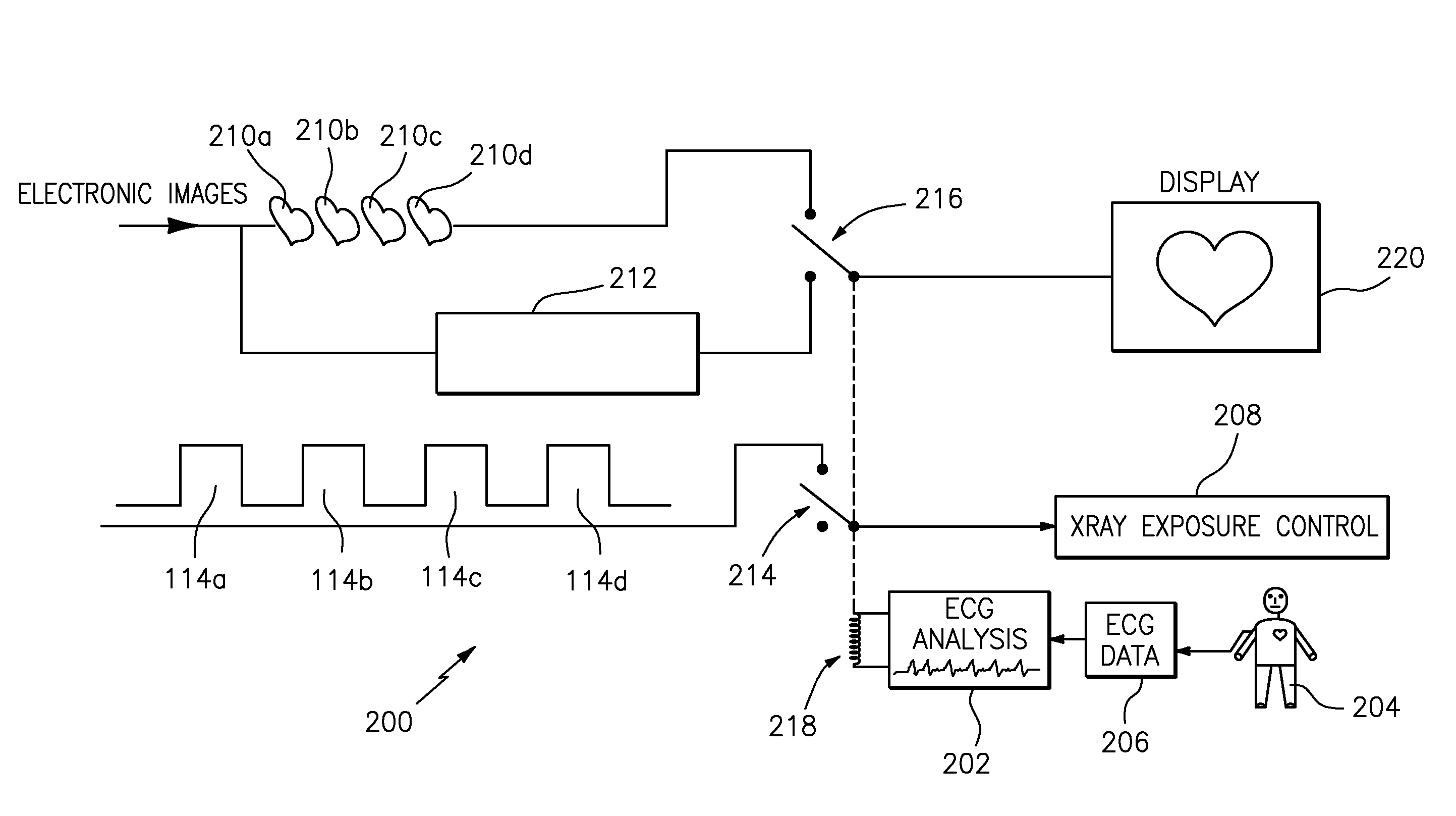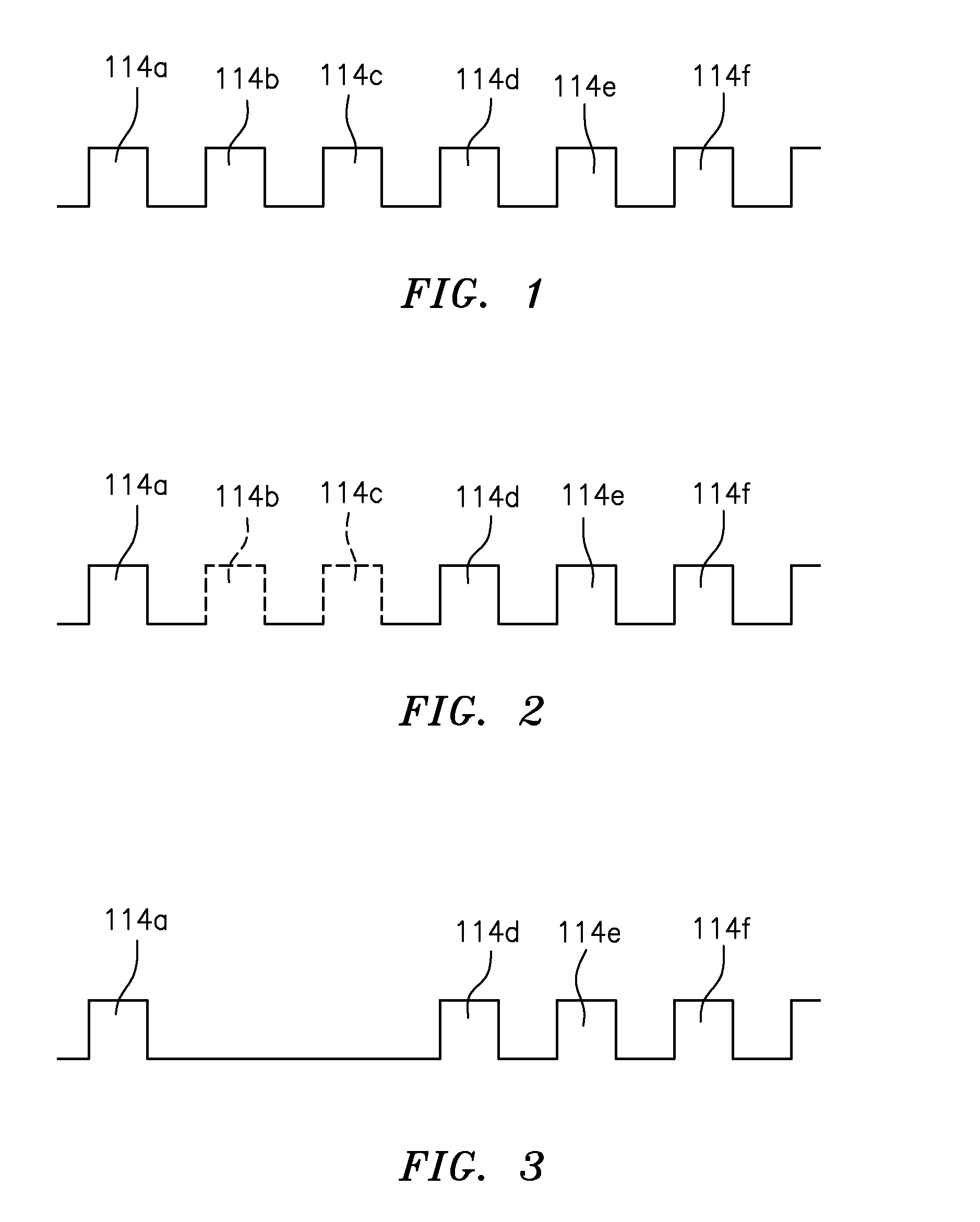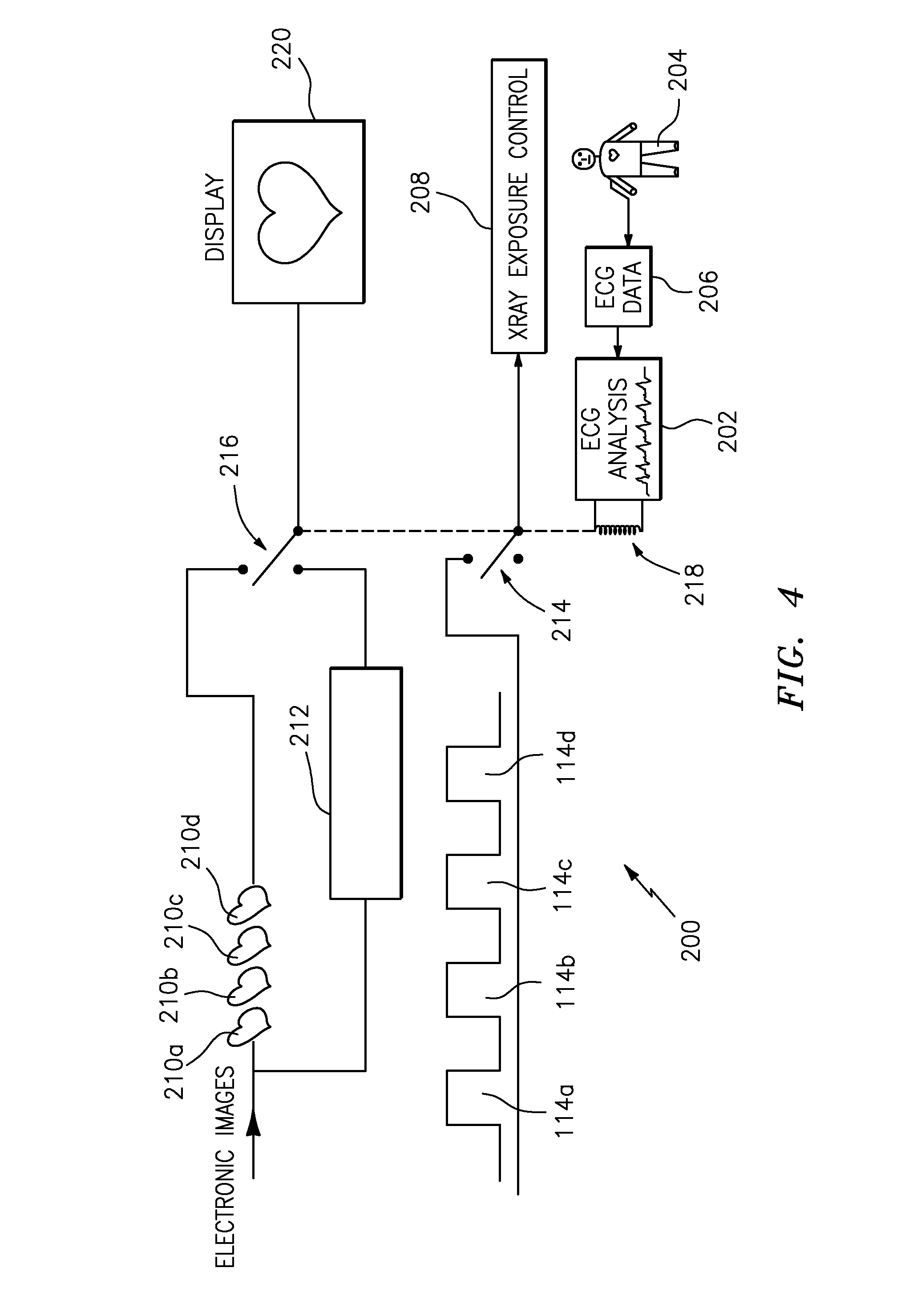Method for removing motion from non-ct sequential x-ray images
a non-ct sequential, x-ray technology, applied in the field of x-ray machines, can solve the problems of motion blurring, limiting, and geometric blur of images, and achieve the effect of reducing x-ray exposur
- Summary
- Abstract
- Description
- Claims
- Application Information
AI Technical Summary
Benefits of technology
Problems solved by technology
Method used
Image
Examples
Embodiment Construction
)
[0022]Applicant has disclosed a method for removing motion from non-CT cardiac angiographic or fluoroscopic x-ray 2-D sequential images by actively deleting or skipping exposure of certain 2-D flash image acquisitions during rapid heart motion, the latter to reduce x-ray exposure. Longer temporal exposures are possible, so that small focal spots can be used, resulting in geometrically sharper images. Such sharpness can be critical to correctly assessing stent deployment and cardiac vessel geometry.
[0023]As used herein, the term “non-CT” means “not computer tomography”.
[0024]Applicant's method is only applicable to flash 2-D acquisitions or conventional fluoroscopy. It is inapplicable to CT type x-ray devices. Such CT types already pause data acquisitions (i.e., sequential images) by synchronizing with the electrocardiograph (a.k.a. ECG or EKG), requiring data prediction by either predictive algorithms or estimated compensation of motion, as described in U.S. Pat. No. 7,672,490 to K...
PUM
 Login to View More
Login to View More Abstract
Description
Claims
Application Information
 Login to View More
Login to View More - R&D
- Intellectual Property
- Life Sciences
- Materials
- Tech Scout
- Unparalleled Data Quality
- Higher Quality Content
- 60% Fewer Hallucinations
Browse by: Latest US Patents, China's latest patents, Technical Efficacy Thesaurus, Application Domain, Technology Topic, Popular Technical Reports.
© 2025 PatSnap. All rights reserved.Legal|Privacy policy|Modern Slavery Act Transparency Statement|Sitemap|About US| Contact US: help@patsnap.com



